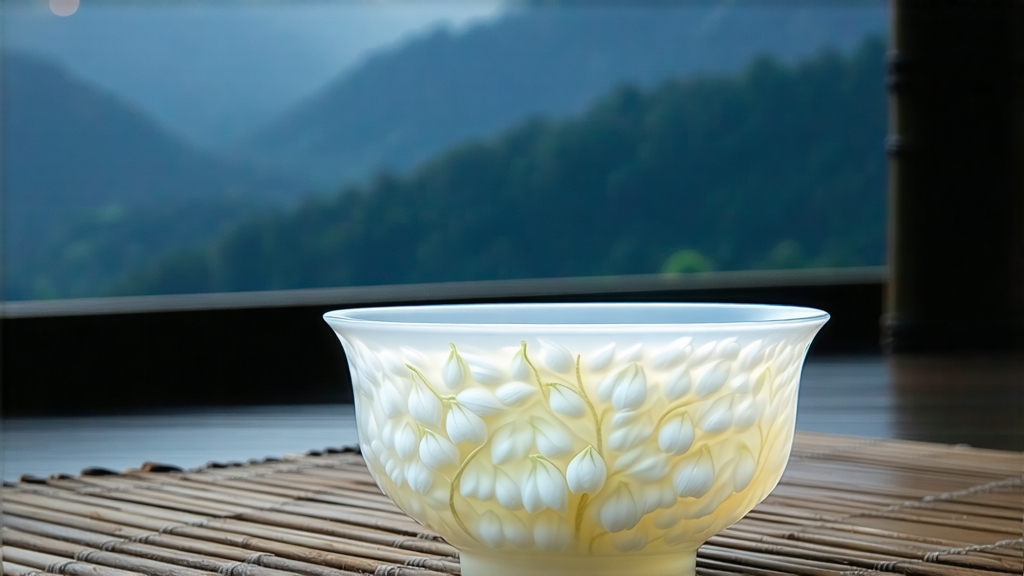
Bai Hao Yin Zhen—literally “White Hair Silver Needle”—is the most aristocratic member of China’s white-tea family. To the uninitiated it looks almost too delicate to be tea: straight, silvery spears that seem to have been borrowed from a heron’s wing rather than picked from a Camellia sinensis bush. Yet within those down-covered buds lies a fragrance that Chinese poets once compared to “the first moonlight after a long drought,” a liquor so pale it resembles liquid topaz, and a sweetness that lingers like a muted bell at dusk. Understanding Silver Needle is therefore less a lesson in agriculture than an apprenticeship to Chinese ideas of restraint, seasonality, and the belief that the softest voice can carry the furthest.
Historical whispers
White tea as a category was first recorded in the Song dynasty (960-1279), when imperial tribute lists mentioned “white cakes” pressed from large-leaf cultivars in northern Fujian. Silver Needle itself, however, does not appear in written sources until the late eighteenth century, when the county of Fuding switched from compressed cakes to loose buds and found that the downy tips resisted mold during the humid south-coast monsoon. By the 1850s Fuding merchants were exporting “Flowery Pekoe” to London and New York, where it fetched higher prices than Keemun or Wuyi rock tea because the leaf was so light it could be smuggled inside silk bolts, escaping the higher duties levied on darker, bulkier teas. Paradoxically, the very trait that made Silver Needle a smuggler’s favorite—its low density—also protected it from over-production; ten thousand buds yield barely half a kilo of finished tea, so the gardens could never be mechanized without destroying the economics.
Terroir and cultivar
Authentic Silver Needle is made only from two local cultivars—Fuding Da Bai and Fuding Da Hao—grown in the coastal counties of Fuding, Zhenghe, and Jianyang. Here, granitic soils drain quickly into the East China Sea, while the warm, briny air encourages extra-long buds between late March and early April. Da Bai (“Big White”) produces thick, pea-sized buds whose amino-acid count can exceed 6 %, double that of most green-tea cultivars, giving the famous umami brothiness. Da Hao (“Big Down”) carries even more silver pubescence, so the finished tea looks dusted with frost. Gardens sit between 200–600 m, low by Chinese standards, but the night sea breeze forces the plants to grow slowly, concentrating fragrance. Pickers work only the dawn hours, finishing before ten o’clock so that the buds still hold overnight moisture and remain supple for the long withering that follows.
Craft: the art of doing almost nothing
If green tea is defined by the kill-green wok and oolong by the shaking bruise, white tea is defined by abstinence. Once the buds arrive at the cottage they are simply spread, one layer thick, on bamboo trays and left to breathe. The first four hours are spent in shade; then the trays are moved into soft filtered sun where the surface moisture evaporates and enzymatic oxidation begins inside the bud. Temperature is never allowed above 32 °C; humidity is watched like a sick child’s fever. At dusk the trays return to the curing room, where they rest overnight while the ambient sea breeze slips through latticed windows. No rolling, no pan-firing, no charcoal bake—only a final gentle bake at 40 °C for twenty minutes the next morning to drop the moisture to 5 %. The result is a tea that is neither “unoxidized” like green tea nor “semi-oxidized” like oolong; instead it occupies a liminal 5–10 % oxidation that preserves the fresh meadow note while adding a lactic, custard-like sweetness picked up during the slow wither.
Grades and micro-seasons
Connoisseurs divide Silver Needle into three micro-seasons picked within a ten-day window. “Heavenly Needle,” plucked on the first two days after the Qingming festival, is shortest, fattest, and most downy; when infused it releases a scent of ripe honeydew and wet stone. “Earthly Needle,” gathered in the middle five days, is slightly longer in stem and develops a greener, bamboo